All good things come in trees
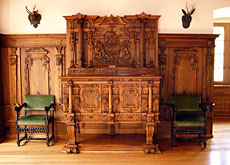
Wood is the star this year of Switzerland’s contribution to European Heritage Days, which is being held this weekend.
After last year’s garden theme, the NIKE cultural preservation centre, which organises the Swiss events, is focusing on one of the world’s most versatile materials. swissinfo visited three locations that have made very different use of wood.
“The aim of the days is to make the public aware of the problems of preserving national architectural and environmental heritage,” Cordula Kessler, project leader for European Heritage Days at NIKE, told swissinfo.
This is done by opening and giving tours of buildings, monuments and other historically significant sites that are normally inaccessible or little-known.
Last year European Heritage Days in Switzerland attracted 70,000 visitors. Organisers are hoping a similar number will visit around 200 events in all 26 cantons this year – which range from wooden Neolithic and Bronze Age river bank settlements in Lucerne to the building of Alpine farm houses.
But in case that sounds too last millennium, xylophiles (wood fans) can also learn about the cutting-edge science of dendrochronology – tree-ring dating – and the role of wood in contemporary Swiss architecture.
Craftsmanship
First stop on swissinfo’s three-canton “wood tour” was Castle Landshut, a moated fairytale edifice in Utzenstorf, canton Bern, which doubles as the Swiss Museum of Wildlife and Hunting.
Of the period rooms with furniture and paintings dating from the 17th century, the most striking are the richly oak-panelled Landshut Room, with its ornately carved sideboard, and the Great Hall.
Castle Landshut is a fine example of how wood was just as important in the construction of an old stone building as the masonry, and it perfectly displays both skilled workmanship and craftsmanship.
The impressive roof trusses, made from fir trees “imported” from the nearby Emmental countryside, push the weight of the roof down the castle’s outside walls, leaving the antler-lined rooms below open-plan.
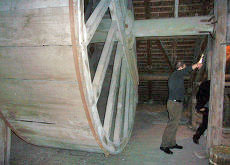
Human hamsters
Less artistic but no less impressive are the roof trusses in the St Ursus Cathedral in neighbouring Solothurn, which touts itself as “Switzerland’s largest Baroque City”.
The cathedral, built between 1762 and 1773, is considered the most important example of Swiss neoclassicism.
The cathedral’s trusses, which were erected in just two days thanks to two giant wooden “human hamster wheels” attached to various ropes and pulleys near the top of the 62-metre spire, impress most through the sheer scale of the work.
Normally inaccessible to the public, they will be open for guided tours over the weekend. But they are not the only wooden artefacts of interest in the cathedral: the organ case, carved choir stalls and lectern all demonstrate outstanding artistry.
“The trusses are original examples of such craftsmanship, and I think one should admire this side of wood in addition to the artistic and finely carved pieces,” Stefan Blank, curator of monuments for canton Solothurn, told swissinfo.

Award-winning
In Aarau swissinfo entered the modern “Färberplatz market hall”, completed in 2002 by Basel architects Miller & Maranta in the middle of the 13th-century city.
The building’s use of around 300 narrow vertical wooden slats results in a strangely open-yet-closed atmosphere: light can of course enter, but if you’re not looking more or less at right angles, the walls appear solid.
The Aarau public have yet to take to this granary-like structure, which certainly has an “is it finished?” feel to it, but it has nevertheless won several cultural preservation awards.
Switzerland does not necessarily use more wood than neighbouring alpine countries – “wherever there are forests, people will build with wood,” points out Blank – but Swiss architects and designers have certainly branched out and maximised its potential.
Forest covers more than 30% of Switzerland’s total area of 41,285 square kilometres.
Switzerland has the highest density of wood in Europe: 361 cubic metres per hectare (10,000 square metres) and a total of more than 400 million cubic metres.
Between 1985 and 1995 this total amount of wood grew by 12%. Over the same period the total forest area grew by 4% or 476 square kilometres (almost the size of canton Obwalden).
Ten million cubic metres of wood grows in Switzerland every year. After the removal of bark and unusable branches, around 7.4 million cubic metres remains.
Around the same amount is used within Switzerland, so the supply and demand is in theory evenly balanced, however at present only 4.5 million cubic metres of Swiss wood is felled a year – the rest of the wood needed is imported.
The idea for European Heritage Days came after France held an open day for historical monuments in 1984.
In 1991 the idea was adopted by the Council of Europe. By 1996 40 countries were involved, and in 1997 the largest state in Europe, Russia, joined.
In 2000 for the first time, all 47 signatory states of the European Cultural Convention took part in European Heritage Days, with the arrival of Azerbaijan.
In 2006 around 20 million people visited around 30,000 monuments and sites.
Switzerland has been participating since 1994. The event is taking place this year is from September 8-9.

In compliance with the JTI standards
More: SWI swissinfo.ch certified by the Journalism Trust Initiative

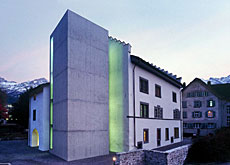
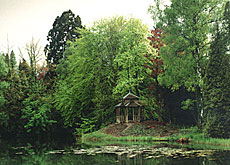
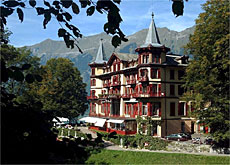
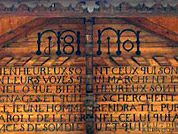
You can find an overview of ongoing debates with our journalists here. Please join us!
If you want to start a conversation about a topic raised in this article or want to report factual errors, email us at english@swissinfo.ch.